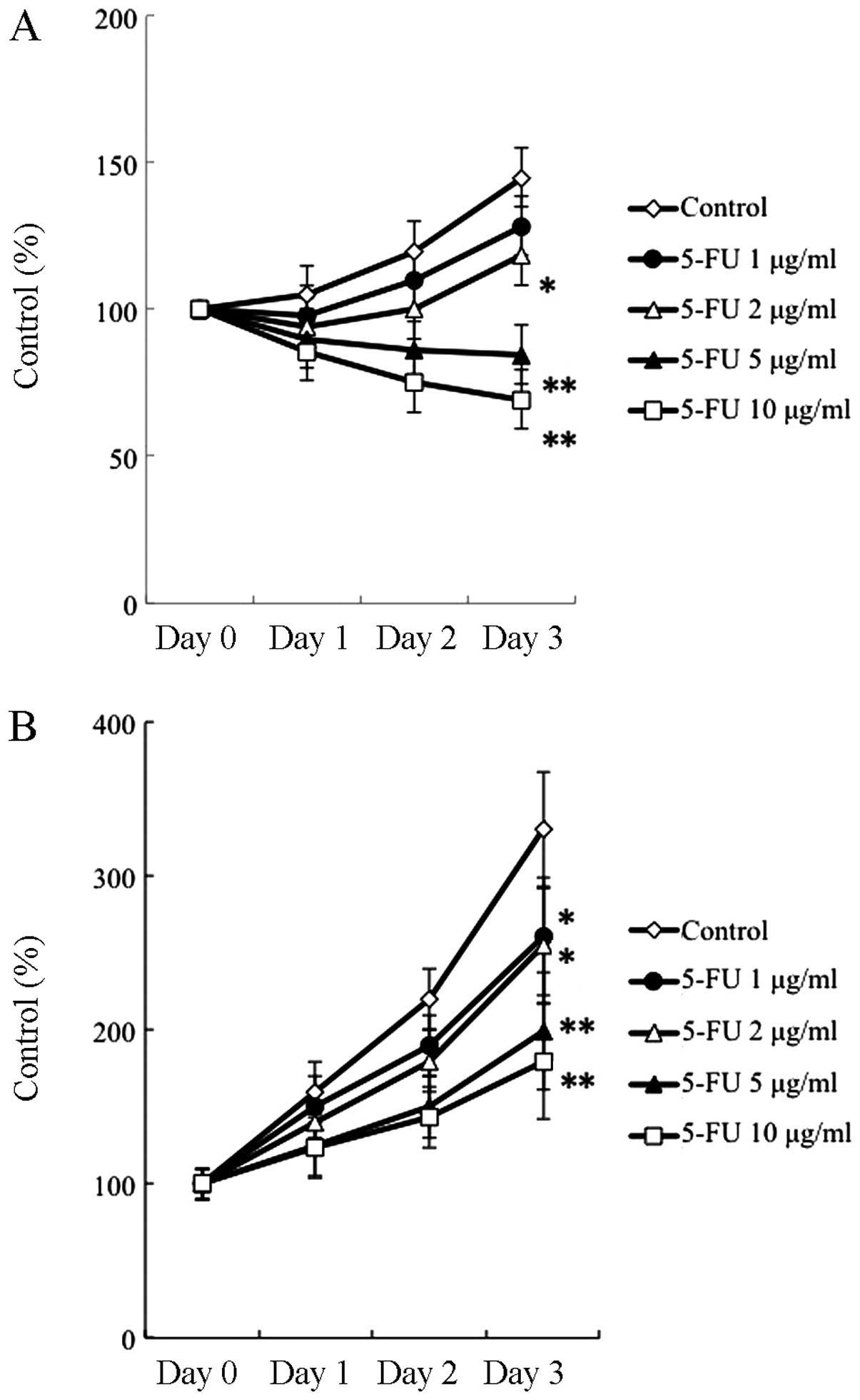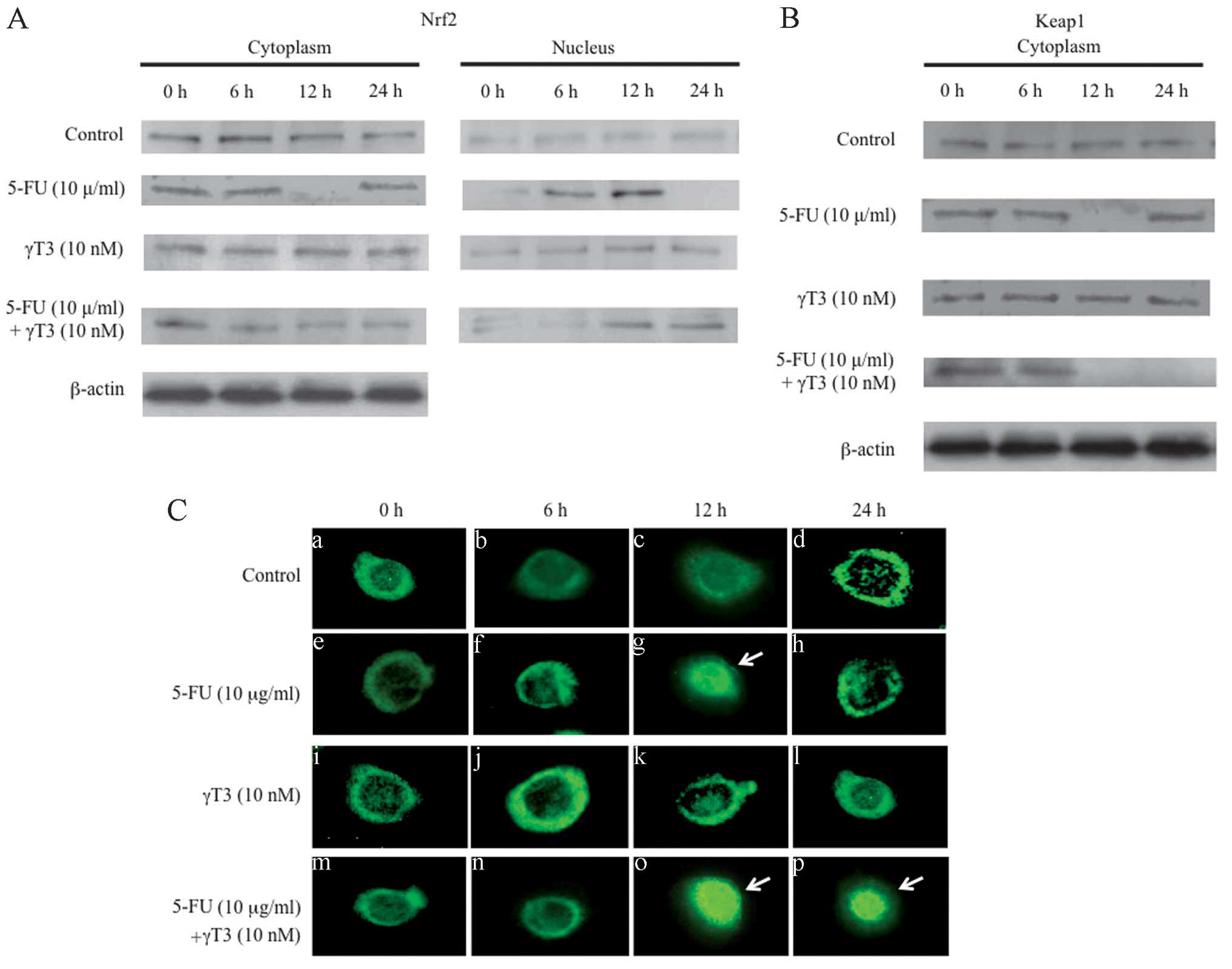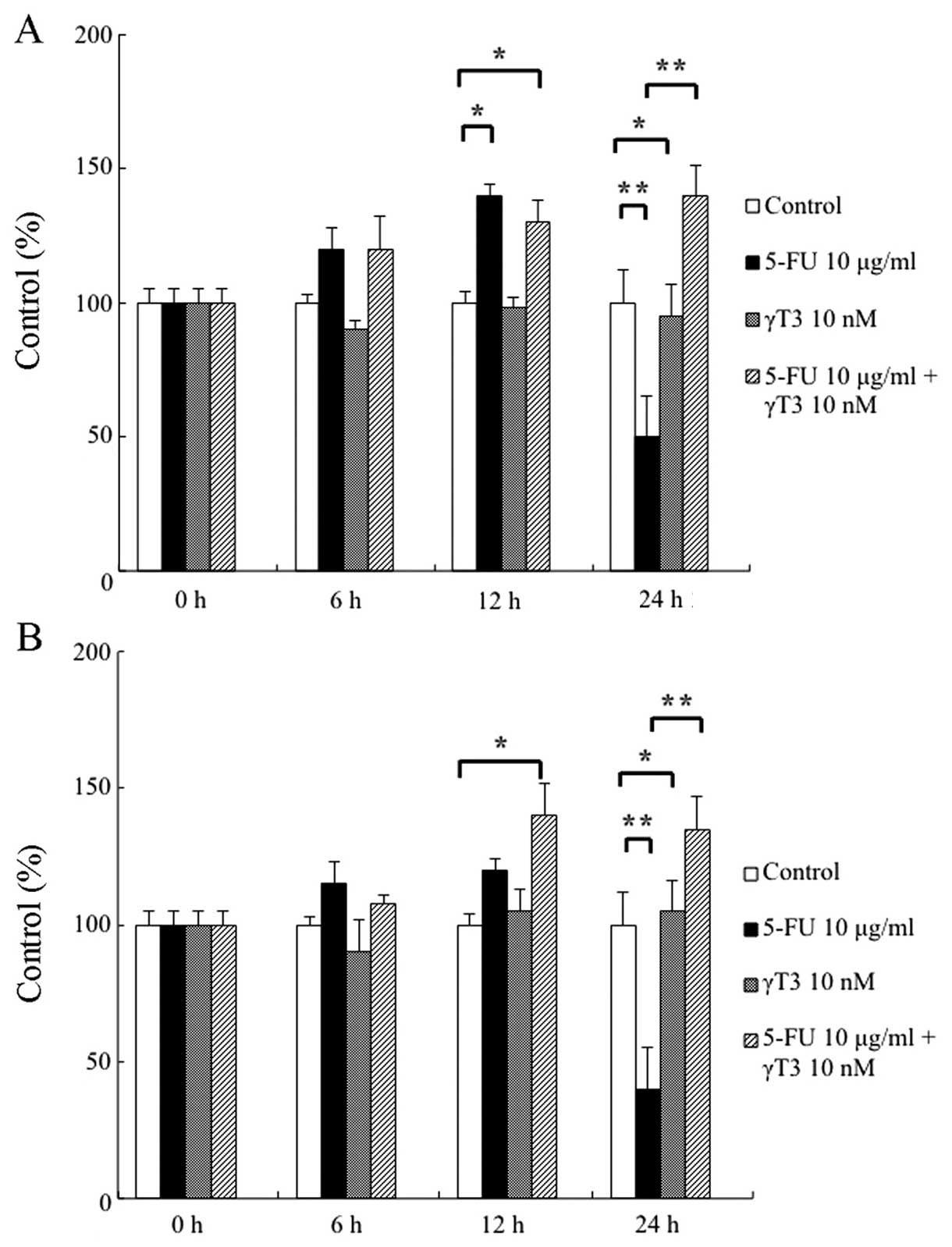|
1
|
Keefe DM, Schubert MM, Elting LS, et al:
Updated clinical practice guidelines for the prevention and
treatment of mucositis. Cancer. 109:820–831. 2007. View Article : Google Scholar : PubMed/NCBI
|
|
2
|
Le QT, Kim HE, Schneider CJ, et al:
Palifermin reduces severe mucositis in definitive chemoradiotherapy
of locally advanced head and neck cancer: a randomized,
placebo-controlled study. J Clin Oncol. 29:2808–2814. 2011.
View Article : Google Scholar : PubMed/NCBI
|
|
3
|
Sonis ST: The pathobiology of mucositis.
Nat Rev Cancer. 4:277–284. 2004. View
Article : Google Scholar : PubMed/NCBI
|
|
4
|
Bloomer WD and Hellman S: Normal tissue
responses to radiation therapy. N Engl J Med. 293:80–83. 1975.
View Article : Google Scholar : PubMed/NCBI
|
|
5
|
Lockhart PB and Sonis ST: Relationship of
oral complications to peripheral blood leukocyte and platelet
counts in patients receiving cancer chemotherapy. Oral Surg Oral
Med Oral Pathol. 48:21–28. 1971. View Article : Google Scholar
|
|
6
|
Sonis ST, Lindquist L, Van Vugt A, et al:
Prevention of chemotherapy-induced ulcerative mucositis by
transforming growth factor beta 3. Cancer Res. 54:1135–1138.
1994.PubMed/NCBI
|
|
7
|
Henke M, Alfonsi M, Foa P, et al:
Palifermin decreases severe oral mucositis of patients undergoing
postoperative radiochemotherapy for head and neck cancer: a
randomized, placebo-controlled trial. J Clin Oncol. 29:2815–2820.
2011. View Article : Google Scholar : PubMed/NCBI
|
|
8
|
Sonis ST: Mucositis as a biological
process: a new hypothesis for the development of
chemotherapy-induced stomatotoxicity. Oral Oncol. 34:39–43. 1998.
View Article : Google Scholar : PubMed/NCBI
|
|
9
|
Sonis ST, Peterson RL, Edwards LJ, et al:
Defining mechanisms of action of interleukin-11 on the progression
of radiation-induced oral mucositis in hamsters. Oral Oncol.
36:373–381. 2000. View Article : Google Scholar : PubMed/NCBI
|
|
10
|
Paris F, Fuks Z, Kang A, et al:
Endothelial apoptosis as the primary lesion initiating intestinal
radiation damage in mice. Science. 293:293–297. 2001. View Article : Google Scholar : PubMed/NCBI
|
|
11
|
Kinhult S, Albertsson M, Eskilsson J and
Cwikiel M: Effects of probucol on endothelial damage by
5-fluorouracil. Acta Oncol. 42:304–308. 2003. View Article : Google Scholar : PubMed/NCBI
|
|
12
|
Kuenen BC, Levi M, Meijers JC, et al:
Potential role of platelets in endothelial damage observed during
treatment with cisplatin, gemcitabine, and the angiogenesis
inhibitor SU5416. J Clin Oncol. 21:2192–2198. 2003. View Article : Google Scholar : PubMed/NCBI
|
|
13
|
Nogueira V and Hay N: Molecular pathways:
reactive oxygen species homeostasis in cancer cells and
implications for cancer therapy. Clin Cancer Res. 19:4309–4314.
2013. View Article : Google Scholar : PubMed/NCBI
|
|
14
|
Boonstra J and Post JA: Molecular events
associated with reactive oxygen species and cell cycle progression
in mammalian cells. Gene. 337:1–13. 2004. View Article : Google Scholar : PubMed/NCBI
|
|
15
|
Schafer FQ and Buettner GR: Redox
environment of the cell as viewed through the redox state of the
glutathione disulfide/glutathione couple. Free Radic Biol Med.
30:1191–1212. 2001. View Article : Google Scholar : PubMed/NCBI
|
|
16
|
Perry G, Raina AK, Nunomura A, Wataya T,
Sayre LM and Smith MA: How important is oxidative damage? Lessons
from Alzheimer’s disease. Free Radic Biol Med. 28:831–834. 2000.
View Article : Google Scholar : PubMed/NCBI
|
|
17
|
Toyokuni S, Okamoto K, Yodoi J and Hiai H:
Persistent oxidative stress in cancer. FEBS Lett. 358:1–3. 1995.
View Article : Google Scholar : PubMed/NCBI
|
|
18
|
Trachootham D, Alexandre J and Huang P:
Targeting cancer cells by ROS-mediated mechanisms: a radical
therapeutic approach? Nat Rev Drug Discov. 8:579–591. 2009.
View Article : Google Scholar : PubMed/NCBI
|
|
19
|
Kensler TW, Wakabayashi N and Biswal S:
Cell survival responses to environmental stresses via Keap1–2-ARE
pathway. Annu Rev Pharmacol Toxicol. 47:89–116. 2007. View Article : Google Scholar
|
|
20
|
Yates MS, Tauchi M, Katsuoka F, et al:
Pharmacodynamic characterization of chemopreventive triterpenoids
as exceptionally potent inducers of Nrf2-regulated genes. Mol
Cancer Ther. 6:154–162. 2007. View Article : Google Scholar : PubMed/NCBI
|
|
21
|
MacLeod AK, McMahon M, Plummer SM, et al:
Characterization of the cancer chemopreventive NRF2-dependent gene
battery in human keratinocytes: demonstration that the KEAP1-NRF2
pathway, and not the BACH1-NRF2 pathway, controls cytoprotection
against electrophiles as well as redox-cycling compounds.
Carcinogenesis. 30:1571–1580. 2009. View Article : Google Scholar : PubMed/NCBI
|
|
22
|
Hui KF, Lam BH, Ho DN, Tsao SW and Ching
AK: Borte-zomib and SAHA synergistically induce ROS-driven
caspase-dependent apoptosis of nasopharyngeal carcinoma and block
replication of Epstein-Barr virus. Mol Cancer Res. 12:747–758.
2013.
|
|
23
|
Wada S: Cancer preventive effects of
vitamin E. Curr Pharm Biotechnol. 13:156–164. 2012. View Article : Google Scholar
|
|
24
|
Kamal-Eldin A and Appelqvist LA: The
chemistry and anti-oxidant properties of tocopherols and
tocotrienols. Lipids. 31:671–701. 1996. View Article : Google Scholar : PubMed/NCBI
|
|
25
|
Kani K, Momota Y, Harada M, et al:
γ-tocotrienol enhances the chemosensitivity of human oral cancer
cells to docetaxel through the downregulation of the expression of
NF-κB-regulated anti-apoptotic gene products. Int J Oncol.
42:75–82. 2013.
|
|
26
|
Wada S, Satomi Y, Murakoshi M, Noguchi N,
Yoshikawa T and Nishino H: Tumor suppressive effects of tocotrienol
in vivo and in vitro. Cancer Lett. 229:181–191. 2005. View Article : Google Scholar : PubMed/NCBI
|
|
27
|
Fujimoto R, Kamata N, Yokoyama K, et al:
Establishment of immortalized human oral keratinocytes by gene
transfer of a telomerase component. J Jpn Oral Muco Membr. 8:1–8.
2002.(In Japanese). View Article : Google Scholar
|
|
28
|
Tamatani T, Azuma M, Aota K, Yamashita T,
Bando T and Sato M: Enhanced IkappaB kinase activity is responsible
for the augmented activity of NF-kappaB in human head and neck
carcinoma cells. Cancer Lett. 171:165–172. 2001. View Article : Google Scholar : PubMed/NCBI
|
|
29
|
McDonald JT, Kim K, Norris AJ, et al:
Ionizing radiation activates the Nrf2 antioxidant response. Cancer
Res. 70:8886–8895. 2010. View Article : Google Scholar : PubMed/NCBI
|
|
30
|
Imbert V, Rupec RA, Livolsi A, et al:
Tyrosine phosphorylation of I kappa B-alpha activates NF-kappa B
without proteolytic degradation of I kappa B-alpha. Cell.
86:787–798. 1996. View Article : Google Scholar : PubMed/NCBI
|
|
31
|
DeNicola GM, Karreth FA, Humpton TJ, et
al: Oncogene-induced Nrf2 transcription promotes ROS detoxification
and tumorigenesis. Nature. 475:106–109. 2011. View Article : Google Scholar : PubMed/NCBI
|
|
32
|
Peterman A, Cella D, Glandon G, et al:
Mucositis in head and neck cancer: economic and quality-of-life
outcomes. J Natl Cancer Inst Monogr. 29:45–51. 2001. View Article : Google Scholar : PubMed/NCBI
|
|
33
|
Elting LS, Cooksley CD, Chambers MS and
Garden AS: Risk, outcomes, and costs of radiation-induced oral
mucositis among patients with head-and-neck malignancies. Int J
Radiat Oncol Biol Phys. 68:1110–1120. 2007. View Article : Google Scholar : PubMed/NCBI
|
|
34
|
Koukourakis MI: Amifostine in clinical
oncology: current use and future applications. Anticancer Drugs.
13:181–209. 2002. View Article : Google Scholar : PubMed/NCBI
|
|
35
|
Criswell T, Leskov K, Miyamoto S, Luo G
and Boothman DA: Transcription factors activated in mammalian cells
after clinically relevant doses of ionizing radiation. Oncogene.
22:5813–5827. 2003. View Article : Google Scholar : PubMed/NCBI
|
|
36
|
Davis RJ: Signal transduction by the JNK
group of MAP kinases. Cell. 103:239–252. 2000. View Article : Google Scholar : PubMed/NCBI
|
|
37
|
Braun S, Hanselmann C, Gassmann MG, et al:
Nrf2 transcription factor, a novel target of keratinocyte growth
factor action which regulates gene expression and inflammation in
the healing skin wound. Mol Cell Biol. 22:5492–5505. 2002.
View Article : Google Scholar : PubMed/NCBI
|
|
38
|
Surh YJ: Cancer chemoprevention with
dietary phytochemicals. Nat Rev Cancer. 3:768–780. 2003. View Article : Google Scholar : PubMed/NCBI
|
|
39
|
Zhang DD: Mechanistic studies of the
Nrf2-Keap1 signaling pathway. Drug Metab Rev. 38:769–789. 2006.
View Article : Google Scholar : PubMed/NCBI
|
|
40
|
Furukawa M and Xiong Y: BTB protein Keap1
targets antioxidant transcription factor Nrf2 for ubiquitination by
the Cullin 3-Roc1 ligase. Mol Cell Biol. 25:162–171. 2005.
View Article : Google Scholar :
|
|
41
|
Jiang T, Chen N, Zhao F, et al: High
levels of Nrf2 determine chemoresistance in type II endometrial
cancer. Cancer Res. 70:5486–5496. 2010. View Article : Google Scholar : PubMed/NCBI
|















